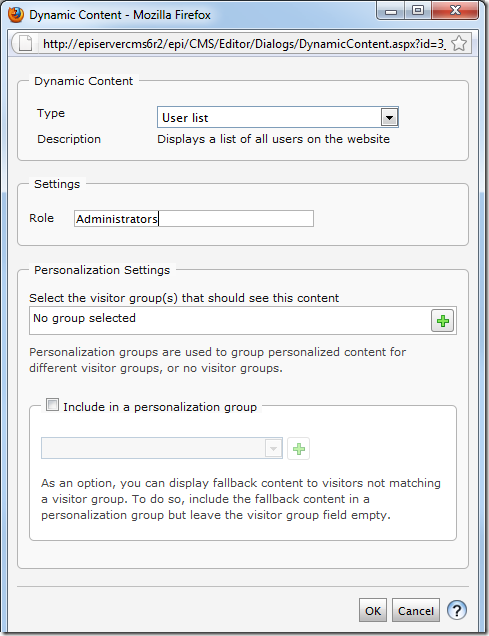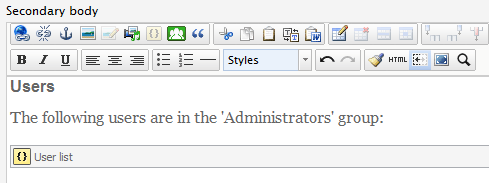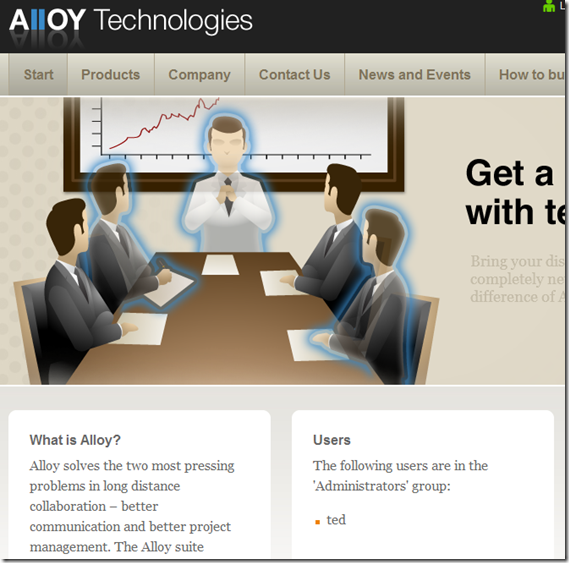Creating simple Dynamic Content in EPiServer CMS 6 R2
Dynamic Content is easier in EPiServer CMS 6 R2
In EPiServer CMS 6 R1 we created dynamic content by implementing the IDynamicContent interface (see this post on how to create dynamic content in CMS 6 R1).
The IDynamicContent interface still exists in CMS 6 R2, but we don’t have to use it – especially if we create dynamic content based on a user control, which is what we’ll do in this post.
Create a new user control
First of all we create a new user control…
…and make it inherit UserControlBase:
using System;
namespace EPiServer.Templates.AlloyTech.DynamicContent
{
public partial class UserList : UserControlBase
{
}
}
Add the DynamicContentPlugIn attribute
Next we add the new DynamicContentPlugIn attribute to ensure EPiServer loads our user control as a dynamic content type on startup (we no longer need to register anything in web.config):
using System;
using EPiServer.DynamicContent;
namespace EPiServer.Templates.AlloyTech.DynamicContent
{
[DynamicContentPlugIn(
DisplayName = "User list",
Description = "Displays a list of users in a specific role",
ViewUrl ="~/Templates/AlloyTech/DynamicContent/UserList.ascx")]
public partial class UserList : UserControlBase
{
}
}
Populate the user list based on the Dynamic Content settings
First, let’s add a Repeater to the code-front of our dynamic content user control:
<asp:Repeater ID="ListOfUsers" runat="server">
<HeaderTemplate>
<ul>
</HeaderTemplate>
<FooterTemplate>
</ul>
</FooterTemplate>
<ItemTemplate>
<li><%# Container.DataItem %></li>
</ItemTemplate>
</asp:Repeater>
Next, let’s add some logic to populate the list to display all users in a specific role (which role will be specified by the web editor):
using System;
using System.Linq;
using System.Web.Security;
using EPiServer.DynamicContent;
namespace EPiServer.Templates.AlloyTech.DynamicContent
{
[DynamicContentPlugIn(
DisplayName = "User list",
Description = "Displays a list of all users on the website",
ViewUrl = "~/Templates/AlloyTech/DynamicContent/UserList.ascx")]
public partial class UserList : UserControlBase
{
protected override void OnLoad(EventArgs e)
{
base.OnLoad(e);
if (!string.IsNullOrEmpty(Role))
{
ListOfUsers.DataSource = Roles.GetUsersInRole(Role).Select(Membership.GetUser);
ListOfUsers.DataBind();
}
}
public string Role { get; set; }
}
}
Now, let’s insert our User list on a page (note the Settings group where our public Role property has been included automatically):

EPiServer automatically takes all public properties (of compatible types) and renders controls for them in the Dynamic Content dialog.
Now this…

…gives us this:
